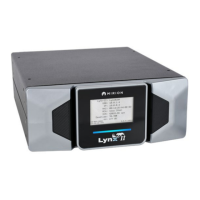Appendix D Methods of Detector Matching
174 Lynx II DSA User's Manual - 7096089
Note: With the Fast Discriminator in the manual mode, the threshold must be rechecked
and adjusted if the Detector/Preamplifier is changed or the Lynx II’s GAIN is
changed.
Baseline Restorer
The digital baseline restorer in the Lynx II is flexible and allows adjustment for varying
baseline conditions affected by detector type, noise, and count rate. The baseline restorer
rate is selected using the BLR mode drop-down menu in the Filter Device Adjust screen.
With the Baseline set to AUTO, the digital baseline restorer is automatically set for
optimum performance throughout the usable input count rate range.
The restorer can also be set to three manual settings: SOFT MEDIUM and HARD. These
settings can be used to manually optimize the BLR response for a specific detector and
count rate application or system noise condition. The SOFT selection significantly reduces
the baseline restorer’s restoration rate. This may prove to be advantageous in some low
count rate/low energy applications. With the SOFT selected, the restorer’s low frequency
noise suppression effectiveness is reduced. The ambient low frequency noise and the
implementation of noise reduction techniques regarding setup can easily be assessed and
tested.
For situations where a higher than normal restoration rate is required, the restorer rate may
be set to MEDIUM or HARD, which increases the restoration rate proportionately.
This can improve performance at extremely high input counting rates or where more
control is required to maintain the baseline, such as with some NaI(Tl) scintillation
detector systems or detectors which exhibit excessive microphonics.

